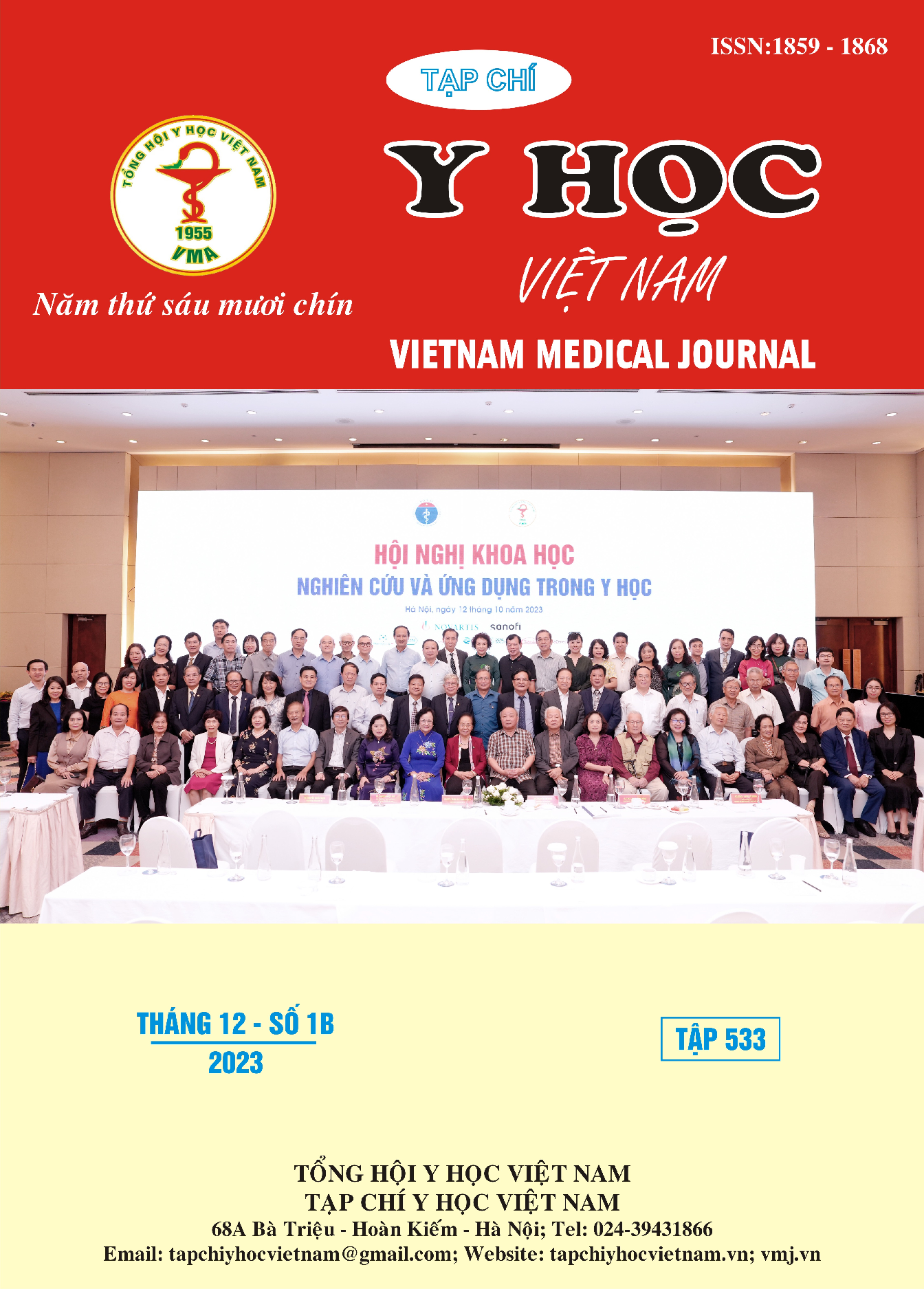THE VALUE OF THE AI TIRADS 2019 CLASSIFICATION TABLE IN EVALUATING THYROID NODULES
Main Article Content
Abstract
Purpose: The value of the AI TIRADS 2019 classification table in evaluating thyroid nodules. Objects and methods of the research: The descriptive cross-sectional obvervational study was conducted on 200 patients who had thyroid nodules diagnosed by ultrasound and FNA method at Nghe An Oncology Hospital from March 2023 to the end of November 2023. Results: There are 40 nodules with malignant cells (accounting for 20%) and 160 nodules without malignant cells (accounting for 80%) out of a total of 200 thyroid nodules in 200 patients. The main component of malignant nodules is solid nodules with a ratio of 36/40 (accounting for 90%). The nuclei contain cystic and sponge-like components without malignant cells (100%). The features of thyroid nodules such as hypoechoic and irregular borders have high sensitivity and specificity (accounting for 88%; 62.5% and 74.4%; 81.9%, respectively) in diagnosing malignant nodules. Characteristics of thyroid nodules such as extremely hypoechoic and microcalcifications have a sensitivity and specificity in diagnosing malignant nodules of 15%, 100% and 45%, 98.6%, respectively. There is a statistically significant difference in malignant properties between the group of thyroid nodules with height>= width and height<width.. In malignant thyroid nodules diagnostic, the diagnostic productivity of the AI-TIRADS classification has an area under the curve (AUC) of 0.882, sensitivity of 87.5%, specificity of 76.3%, positive predictive value of 47.9%, negative predictive value of 96%, accuracy of 78.5%. Conclusion: The AI-TIRADS classification is simple, easy to apply and has good value for diagnosing malignant and benign thyroid nodules.
Article Details
References
2. Viet-nam-fact-sheets. Accessed April 2, 2023.
3. Wildman-Tobriner B, Buda M, Hoang JK, et al. Using Artificial Intelligence to Revise ACR TI-RADS Risk Stratification of Thyroid Nodules: Diagnostic Accuracy and Utility. Radiology. 2019; 292 (1):112-119. doi:10.1148/radiol.2019182128
4. Trần Thị Lý (2020). Giá Trị Của Thang Điểm EU TIRADS và ACR TIRADS Trong Đánh Giá Nhân Tuyến Giáp. Luận Văn Thạc Sỹ y Học Chuyên Ngành Chẩn Đoán Hình Ảnh, Đại Học Y Hà Nội.
5. Kwak JY, Han KH, Yoon JH, et al. Thyroid imaging reporting and data system for US features of nodules: a step in establishing better stratification of cancer risk. Radiology. 2011;260 (3): 892-899. doi:10.1148/radiol.11110206
6. Hong Y rong, Wu Y lian, Luo Z yan, Wu N bo, Liu X ming. Impact of nodular size on the predictive values of gray-scale, color-Doppler ultrasound, and sonoelastography for assessment of thyroid nodules. J Zhejiang Univ Sci B. 2012;13(9):707-716. doi:10.1631/jzus.B1100342
7. Papini E, Guglielmi R, Bianchini A, et al. Risk of malignancy in nonpalpable thyroid nodules: predictive value of ultrasound and color-Doppler features. J Clin Endocrinol Metab. 2002;87(5): 1941-1946. doi:10.1210/jcem.87.5.8504
8. Moifo B, Takoeta EO, Tambe J, Blanc F, Fotsin JG. Reliability of Thyroid Imaging Reporting and Data System (TIRADS) Classification in Differentiating Benign from Malignant Thyroid Nodules. Open J Radiol. 2013;3 (3): 103-107. doi:10.4236/ ojrad.2013. 33016
9. Tessler FN, Middleton WD, Grant EG, et al. ACR Thyroid Imaging, Reporting and Data System (TI-RADS): White Paper of the ACR TI-RADS Committee. J Am Coll Radiol. 2017;14(5):587-595. doi:10.1016/j.jacr.2017.01.046
10. Chen Y, Gao Z, He Y, et al. An Artificial Intelligence Model Based on ACR TI-RADS Characteristics for US Diagnosis of Thyroid Nodules. Radiology. 2022; 303(3):613-619. doi: 10.1148/ radiol.211455
11. Si CF, Fu C, Cui YY, Li J, Huang YJ, Cui KF. Diagnostic and therapeutic performances of three score-based Thyroid Imaging Reporting and Data Systems after application of equal size thresholds. Quant Imaging Med Surg. 2023;13(4):2109-2118. doi:10.21037/qims-22-592


